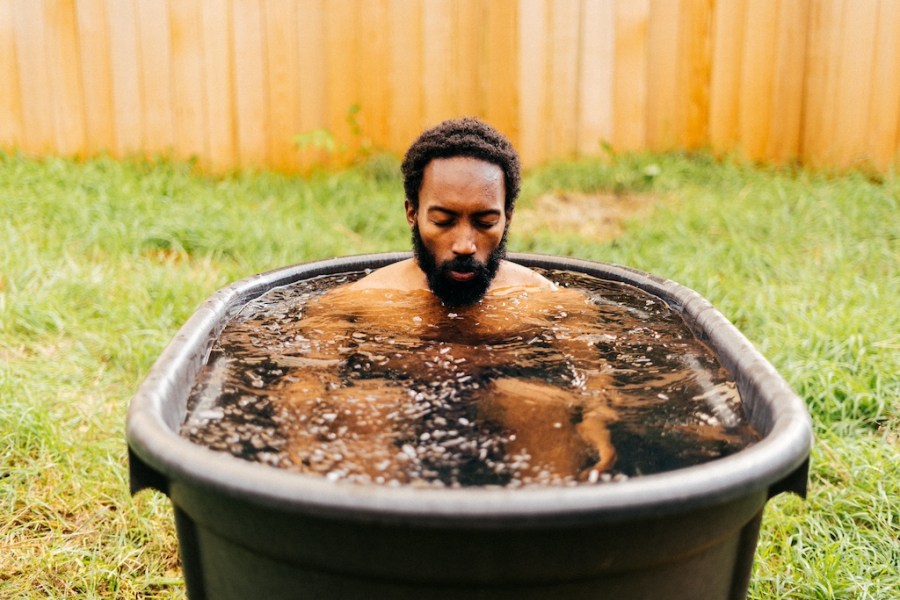Embrace the cold water trend for improved circulation and a mood boost – but proceed with caution and start slow.
In the words of Outkast, what’s cooler than cool? Ice cold! Cold-water immersion is continuing to make waves in the wellness world. From state-of-the-art recovery tubs like the Edge Tub Elite, to low-budget cold showers, it’s a trend soaking up the spotlight.
But is taking the plunge worth the pain, or is it simply a fleeting fad best avoided? Let’s break the ice with some expert insights from Sanctuary Bathrooms, in collaboration with healthy ageing specialist Dr Yassine Bendiabdallah from ZEN Healthcare.
Dive into the benefits of ice baths
As summer temperatures rise, more of us are swapping hot showers for cold, with UK searches for ‘benefits of cold showers’ taking a leap of over 5,000% in the past month. Why the buzz? A cold shower can jolt you awake, boosting oxygen intake, heart rate, and alertness. It’s more than just a caffeine alternative; those icy blasts can also soothe itchy skin, boost hydration, and improve overall skin health.
Here are some other ways cold-water immersion benefits body and mind.
- Enhanced muscle recovery: Reduces muscle soreness and inflammation post-exercise, speeding up recovery time.
- Improved circulation: Promotes better blood flow, helping to deliver oxygen and nutrients to muscles more efficiently.
- Boosted immune system: Stimulates immune function, potentially increasing resistance to illness.
- Elevated mood and reduced stress: Triggers the release of endorphins and boosts dopamine levels, which can enhance mood and reduce stress.
- Increased alertness: The shock of cold water increases heart rate and adrenaline, enhancing overall alertness and mental clarity.
- Better skin and hair health: Tightens pores, reduces inflammation, and can lead to brighter skin and shinier, stronger hair.
- Alleviation of pain: Acts as an analgesic, numbing pain and decreasing inflammation around injured tissues.
- Improved sleep quality: Helps some people achieve deeper, more restful sleep due to its calming effects on the nervous system.
- Mental resilience: Builds mental toughness by consistently pushing the body out of its comfort zone.
Beware the freeze
But jumping into freezing water isn’t risk-free. The shock can spike your blood pressure and heart rate, lead to muscle shock, and in extreme circumstances even cause hypothermia or hyperventilation. People with asthma or other breathing conditions should be especially careful.
“Extreme cold water exposure can constrict blood vessels, leading to hypothermia, cardiac issues, and even frostbite,” cautions Dr Bendiabdallah. His advice: consult a pro before diving in, especially if you have pre-existing health conditions.
Fab or fad?
So, is it worth taking the plunge? Dr Bendiabdallah offers a balanced view: “Daily or regular cold plunges can improve mood, circulation, recovery, and reduce inflammation. Start small – 30 seconds to a minute – and gradually increase to a maximum of five to ten minutes. Break it up into sessions if needed, and always listen to your body.”
James Roberts, director of Sanctuary Bathrooms, adds, “You don’t need fancy equipment to benefit from this trend. A cold bath or shower at home can get you started. Take the plunge a couple of times a week and tune into how your body reacts. If it starts affecting your mood or energy levels, pull back – no need to overdo it.”
How to make a DIY ice bath at home
Ready to test the waters? Fill your tub with cold water and ice or hop into a cold shower. Start slow and gauge your body’s response. The key is to stay in tune with your body and adjust as needed.







